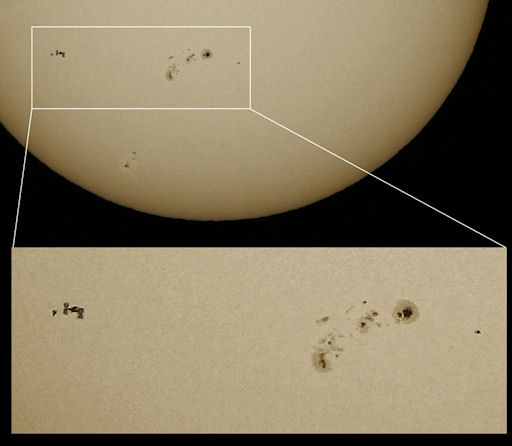Turn your cell phone into a field-tested satellite tracker. Works for Android and iPhone. | | |
CME IMPACT: A coronal mass ejection (CME) hit Earth's magnetic field on March 10th around 0630 UT. The impact, albeit weak, did provoke geomagnetic activity around the poles. High-latitude sky watchers should remain alert for auroras.
impact images: from Zoltan Kenwell near Edmonton, Alberta, Canada; from Warren Gammel of Fairbanks, Alaska; from Joseph Shaw of Poker Flat Research Range, Alaska; from William Helms of Fairbanks, Alaska;
X-FLARE: March 9th ended with a powerful solar flare. Earth-orbiting satellites detected an X1.5-class explosion from behemoth sunspot 1166 around 2323 UT. A movie from NASA's Solar Dynamics Observatory shows a bright flash of UV radiation plus some material being hurled away from the blast site:

Movie formats: 4 MB gif, 1.2 MB iPad, 0.3 MB iPhone
UPDATE (March 10 @ 1800 UT): Newly-arriving coronagraph data from the Solar and Heliospheric Observatory show no bright CME emerging from this eruption. Some material was surely hurled in our direction, but probably not enough for significant Earth-effects.
After four years without any X-flares, the sun has produced two of the powerful blasts in less than one month: Feb. 15th and March 9th. This continues the recent trend of increasing solar activity, and shows that Solar Cycle 24 is heating up. NOAA forecasters estimate a 5% chance of more X-flares during the next 24 hours.
SOLAR FLARE ALERTS: Would you like a call when the next X-flare erupts? Sign up for Spaceweather PHONE.
SUNSPOT CONJUNCTION: On March 7th, shortly after space shuttle Discovery undocked from the International Space Station, the two ships flew directly in front of the sun over Europe. Catalin Fus of Krakow, Poland, had his solar-filtered telescope trained on sunspot 1166 and recorded this amazing conjunction:

"I was surprised that I could see Discovery flying around the station," says Fus. "The shuttle is so small compared to the ISS." Nevertheless, both silhouettes were clearly visible alongside the sunspot. Browse the links for more transit images: from Jérôme DELPAU of Coemont, Sarthe, France; from Jan Eric Krikke of Heerenveen, The Netherlands; from Pawel Warchal of Cracow, Poland.
March 2011 Aurora Photo Gallery
[previous Marches: 2010, 2009, 2008, 2007, 2006, 2005, 2004, 2003, 2002]

